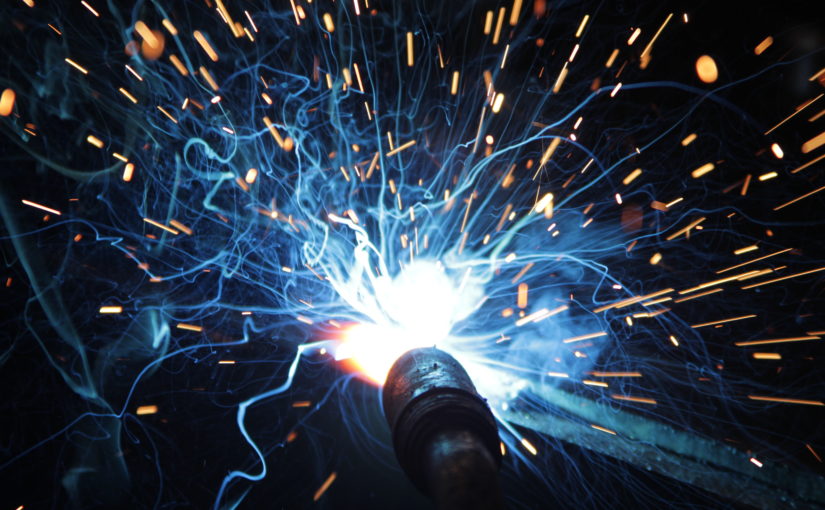Dorothy Walker didn’t expect to find a career in welding. Instead, she saw it as a way to make a family-supporting income. Once she learned the science behind the trade, though, she grew to love welding. Now, however, fewer people are looking to pursue careers in welding.
As more skilled welders are expected to retire, a significant gap (2018) continues to emerge between the skills required for existing jobs and the knowledge and skills that prospective employees are expected to have. According to Deloitte and the Manufacturing Institute (2015), only 1.4 million people will fill the 3.4 million manufacturing jobs expected to be open between 2015 and 2025. This large labor shortage will hinder manufacturing in the U.S., while at the same time representing a tremendous opportunity for people looking for rewarding career opportunities.
In fact, nontraditional occupations for women, or careers with workforces that are more than 75 percent male, may offer women higher wages than other careers that are traditionally female-dominated, according to Milwaukee Area Technical College (MATC) (2018).
Walker, the interim Dean of the Technical and Applied Sciences Division at MATC, exemplifies what it takes to develop a rewarding career in welding despite initially facing adversity in the male-dominated field. Now, Walker works to help boost young women’s interest in welding careers and support their technical education.
Q&A
Airgas Thinks: How did your career in welding begin?
Dorothy Walker: It was not a planned career path. It was something I learned to do at a company that I had already been working at for 10 years. When I found out that welding was one of the highest-paying jobs at the company, I asked a welder to teach me how to weld. I was a single parent, so I was thinking about the type of income I needed to support my family. My career in welding started as a practical economic choice, and then I grew to love it.
AT: What was your educational path?
DW: I first learned how to weld through on-the-job training. Then, I went to school at MATC. During this time, I learned the technical theory behind welding, and coming to school gave me the perspective I needed to understand that welding is a science. I’m a firm believer that you need to learn the science of welding. I have an associate degree in welding technology and a bachelor’s degree in career and technical education.
AT: What challenges have you faced throughout your career?
DW: Something as simple as access to a restroom was a major challenge for me at my first welding job in Milwaukee. The facility I worked in did not have a women’s restroom, so I had to leave the building to go to the main office restrooms. In the beginning of my career, men did not accept that I knew what I was doing in the shop. Even though I had a strong educational background, there were biases to overcome.
AT: What’s your favorite thing about welding?
DW: My favorite part of welding is the hands-on aspect. Once you really learn welding, you feel the pride of being able to see something you have put together and the quality of welds you have produced. That pride comes from knowing how to set the equipment, your machine, the travel speed and angle. I enjoy challenging myself to produce the best welds I can.
The most rewarding part of my career now is teaching and helping people realize that there is so much opportunity in welding. I have seen the impact when people I taught would come back, after starting their careers, and say, “Thank you for pointing this out to me and letting me know that I could have a career in welding.”
AT: What are you doing to encourage more women to enter the manufacturing field?
DW: There is not enough information available for women to learn about careers in welding. We don’t do enough to tell women about the welding trades, the satisfaction of welding and the variety of paths available within the field. We have to reach girls earlier.
I go to talk to girls in high schools, middle schools and community-based organizations to let them know that there is potential for them to have interesting and high-earning careers in welding.
MATC hosts a Girl Scout activity every year so that young women can experience nontraditional careers, including welding and manufacturing. This is consistently one of the most popular Girl Scout activities. The participants get to see welding as not only an industrial trade, but also as an art.
AT: What would you say to younger women about a profession in welding?
DW: I would tell them that welding is a very exciting trade to pursue. There are so many paths that you can take in welding. For example, you can start out as a production welder and become a Certified Welding Inspector, then go back to school and become an instructor. I always recommend investing in education, but I think hands-on training is the foundation of a successful career.
The Path Forward
Walker’s example and the examples of many other trailblazing women in trades show a promising path toward closing the skills gap in the coming years. Programs that expose women of all ages to the benefits of a career in welding are key to empowering women to seize available opportunities.
